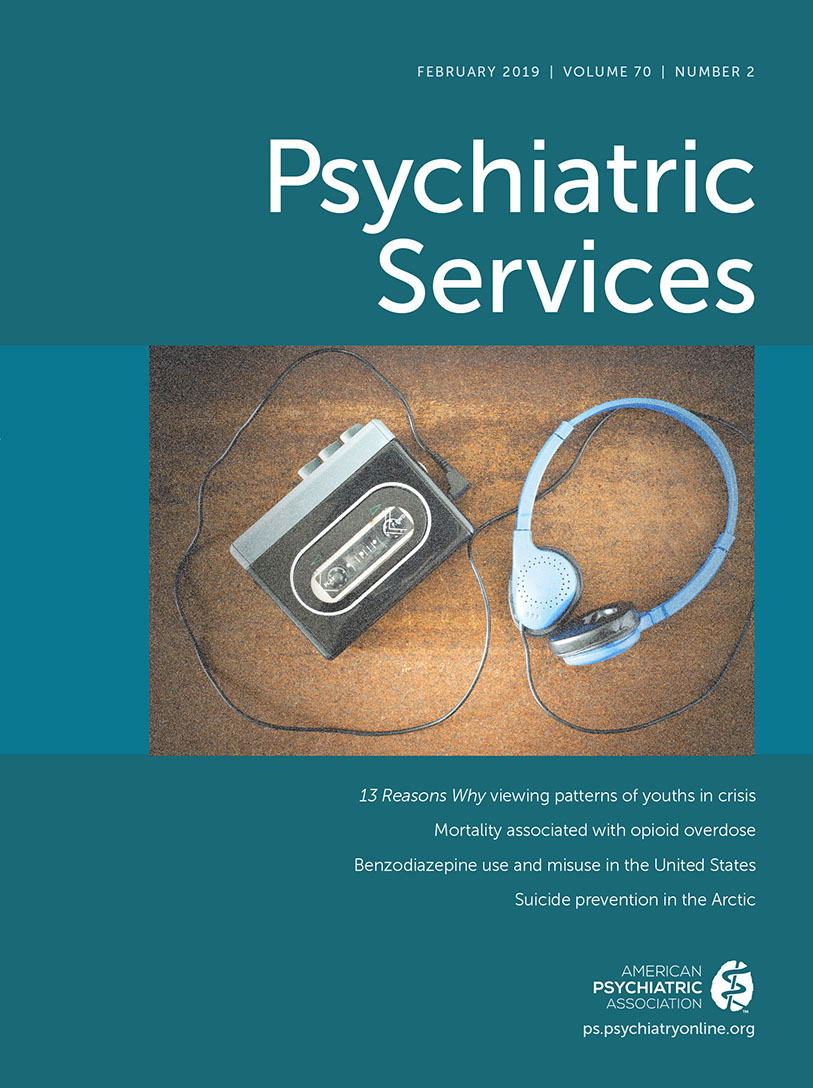Mental Disorders Among Children Born With Neonatal Abstinence Syndrome
Despite high incidence of neonatal abstinence syndrome (NAS) (1), a drug withdrawal condition resulting from in utero opioid exposure, there are limited longitudinal data regarding children’s outcomes (2). This study extends previous work by examining psychiatric outcomes in early childhood for a sample of Medicaid-covered infants with NAS compared with all other births.
Using claims from Truven Health Analytics’ Multi-State Medicaid Database, we used ICD-9 codes to identify infant livebirth (codes V30-V39) records from January 2008 through September 2010 with 5 years of continuous enrollment and a diagnosis of NAS (code 779.5, N=1,046) and all other births (N=269,726) [see online supplement]. Outcomes were mental disorders diagnosed between ages 1 and 5 years (Chapter V codes, 290–319).
Approximately half of the children with NAS had a diagnosed mental disorder before age 5, compared with 30% of all other births (p<.05) (Table 1). Compared with all other births, children born with NAS were over twice as likely to have disturbance of conduct, hyperkinetic syndrome of childhood, adjustment reaction, and intellectual disabilities and were over 1.5 times more likely have specific delays in development and other disorders.
| NAS births (N=1,046) | All other births (N=269,726) | ||||
|---|---|---|---|---|---|
| ICD-9 diagnostic category and code group | N | % | N | % | Z score |
| Any mental disorder | 511 | 48.9 | 81,814 | 30.3 | 12.996* |
| Specific delays in development (e.g., language, coordination) (315) | 327 | 31.3 | 49,591 | 18.4 | 10.719* |
| Disturbance of conduct (312) | 113 | 10.8 | 10,879 | 4.0 | 11.073* |
| Hyperkinetic syndrome of childhood (e.g., ADHD) (314) | 94 | 9.0 | 9,372 | 3.5 | 9.687* |
| Adjustment reaction (309) | 75 | 7.2 | 7,799 | 2.9 | 8.220* |
| Acute reaction to stress (308) | 49 | 4.7 | 8,123 | 3.0 | 3.156* |
| Neurotic disorders (e.g., anxiety) (300) | 43 | 4.1 | 7,365 | 2.7 | 2.731* |
| Special symptoms or syndromes (307) | 41 | 3.9 | 9,672 | 3.6 | .579 |
| Disturbance of emotions specific to childhood and adolescence (313) | 39 | 3.7 | 5,350 | 2.0 | 4.033* |
| Intellectual disabilities (317–319) | 37 | 3.5 | 4,074 | 1.5 | 5.351* |
| Psychoses with origin specific to childhood (e.g., autism spectrum, pervasive developmental disorders) (299) | 32 | 3.1 | 4,752 | 1.8 | 3.179* |
TABLE 1. Mental disorders among children born with NAS and all other birthsa
These findings demonstrate that NAS is a marker for high levels of risk of psychiatric conditions in early childhood. Because of environmental and other confounders, we are able to note only an association between NAS and mental disorders, not a causal relationship. Type of opiate or other substance exposure in utero and postnatal treatment likely contributed to the outcomes as well.
1 : Incidence and costs of neonatal abstinence syndrome among infants with Medicaid: 2004–2014. Pediatrics 2018;141:e20173520Crossref, Medline, Google Scholar
2 Reddy UM, Davis JM, Ren Z, et al: Opioid use in pregnancy, neonatal abstinence syndrome, and childhood outcomes: executive summary of a joint workshop by the Eunice Kennedy Shriver National Institute of Child Health and Human Development, American College of Obstetricians and Gynecologists, American Academy of Pediatrics, Society for Maternal-Fetal Medicine, Centers for Disease Control and Prevention, and the March of Dimes Foundation. Obstet Gynecol 2017; 130:10–28Google Scholar



